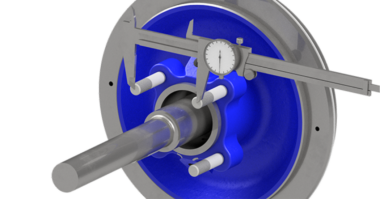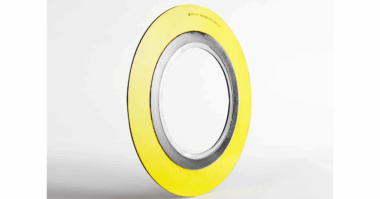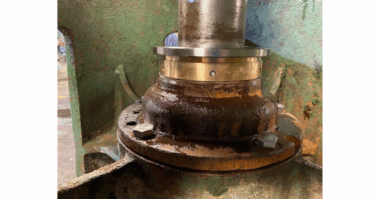Introduction
Industries such as pulp and paper, chemicals, pharmaceuticals, and food and beverage face substantial sealing challenges when handling dry powders and bulk solids. Traditional sealing methods such as packing, air purge seals, or face-to-face mechanical seals often result in accelerated wear, increased maintenance, and higher operational costs due to direct product contact. This article explores how air seal technology provides an innovative and efficient solution.
Challenges with Traditional Sealing Methods Traditional seals frequently encounter problems such as excessive wear from the abrasive nature of powders and solids, resulting in product loss and increased downtime for repairs. Fabricated vessels, common in powder handling, exacerbate the problem with alignment challenges, as seals must mount against vessel walls that may not be perfectly aligned with the shaft.
The Advantages of Air Seal Technology
Air seals, designed for both dry and wet applications, utilize engineered clearances and directional flow paths to create a uniform pressure and velocity profile around the shaft, forming a pneumatic seal. This technology addresses several critical issues:
- Minimal Contact: The non-contact design prevents abrasion and wear on both the seal and the shaft.
- Alignment Tolerance: Air seals can handle up to 1.5 degrees of angular misalignment and 0.0625 inch of parallel misalignment, accommodating inherent installation challenges.
- Operational Efficiency: The floating throttle technology ensures continuous, maintenance-free operation, reducing downtime significantly.
Operational Mechanics
Air seals generate a circumferential boundary layer of air that acts as a cushion, isolating the seal from mechanical runout and abrasive contact. This system requires a stable air supply to maintain the internal pressure necessary for the seal to function effectively. Installation is straightforward with solid and split configurations available, and no adjustments are necessary once the appropriate spacers are in place.
Maintenance and Durability
These seals are designed for longevity and require minimal maintenance, provided there is a continuous air supply. The materials used in construction are selected to prevent wear and corrosion under typical operating conditions. However, in the event of a system upset where product bypasses the seal, the design allows for easy disassembly, cleaning, and reassembly.
Conclusion
Implementing air seal technology significantly reduces the operational costs associated with maintenance, repair, and cleanup while eliminating product loss. This advancement not only enhances the reliability of equipment but also contributes to more sustainable production processes.
Air Seal Features & Benefits:
- Efficient Design: Minimizes air usage while maintaining effective sealing.
- Longevity: Operates without issues throughout the life of the equipment due to its non-contact nature.
- Versatility: Suitable for a wide range of bulk handling equipment, including mixers, blenders, agitators, pulpers, screw conveyors, refiners, and rotor valves.
- Resilience: Capable of handling angular and parallel shaft movement.
- Maintenance-Free: Requires little to no maintenance when installed and operated correctly.
With air seal technology, facilities handling powders and bulk materials can achieve higher efficiency and reliability, paving the way for more optimized and less disruptive operations.




